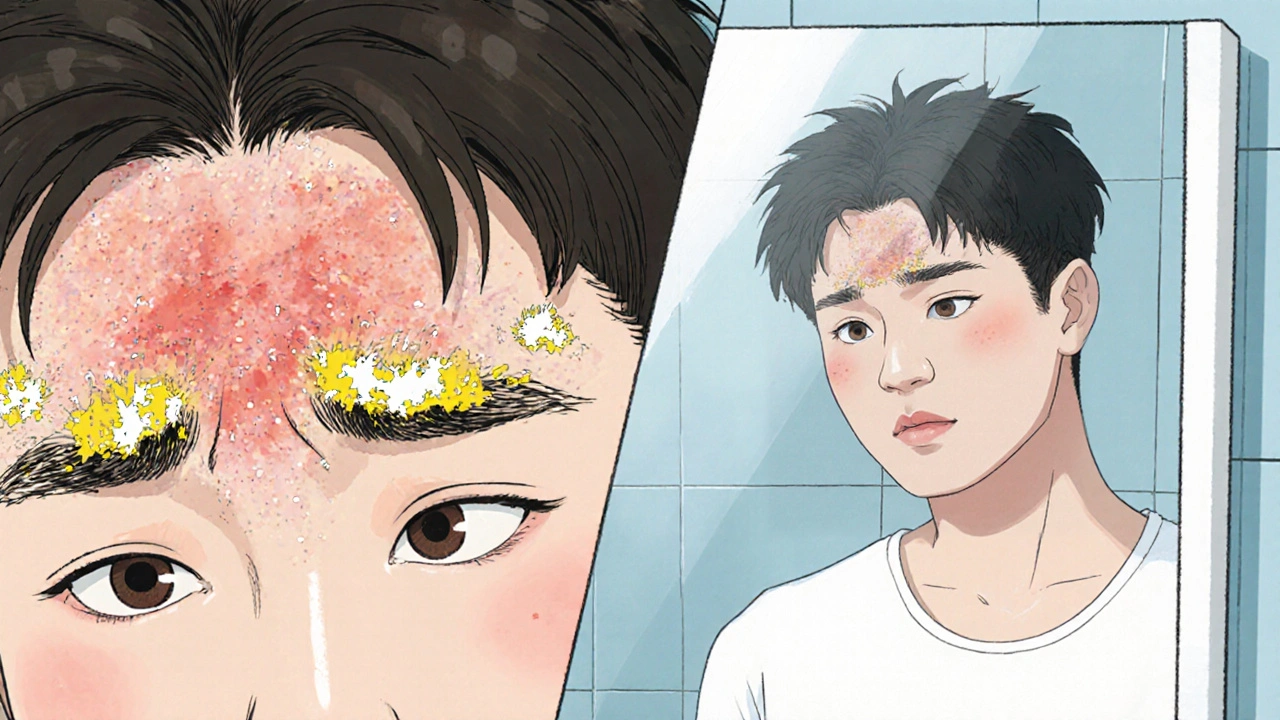When your scalp flakes like snow in winter, or your eyebrows get red and greasy, you might be dealing with seborrheic dermatitis, a common skin condition caused by an overgrowth of yeast on oily areas of the skin. Also known as dandruff when it shows up on the scalp, it’s not contagious, not caused by poor hygiene, and doesn’t mean your skin is dirty—it’s just reacting to something inside your body. This isn’t just an annoyance. For many, it’s a cycle of redness, itching, and flaking that comes back every few weeks, no matter how much shampoo they use.
Seborrheic dermatitis often shows up where skin makes the most oil: the scalp, sides of the nose, eyebrows, ears, and chest. It’s linked to Malassezia yeast, a type of fungus that lives naturally on skin but can trigger inflammation in some people. Stress, cold weather, hormonal shifts, and even certain medications can make it worse. It’s not the same as psoriasis or eczema, though they can look similar. The key difference? Seborrheic dermatitis tends to be greasy, not dry, and it flares in oily zones.
What helps? antifungal creams, like ketoconazole or ciclopirox, target the yeast that fuels the inflammation. Over-the-counter shampoos with zinc pyrithione, selenium sulfide, or coal tar can calm the scalp. For stubborn cases, doctors might suggest low-strength steroid lotions or calcineurin inhibitors—gentler than steroids, but still powerful. The goal isn’t to cure it forever (it rarely goes away completely), but to control it so it doesn’t control you.
You’ll find posts here that dig into exactly what works: how benzoyl peroxide can help calm skin inflammation, why some people swear by aloe vera blends, and how to pick between medicated shampoos without wasting money. You’ll also see what’s behind treatments for similar skin issues—like eczema or acne—so you don’t mix up the fixes. This isn’t about guessing. It’s about matching your symptoms to the right tools, one step at a time.

Explore how azelaic acid treats seborrheic dermatitis, its mechanisms, usage tips, and how it stacks up against other options.
View more